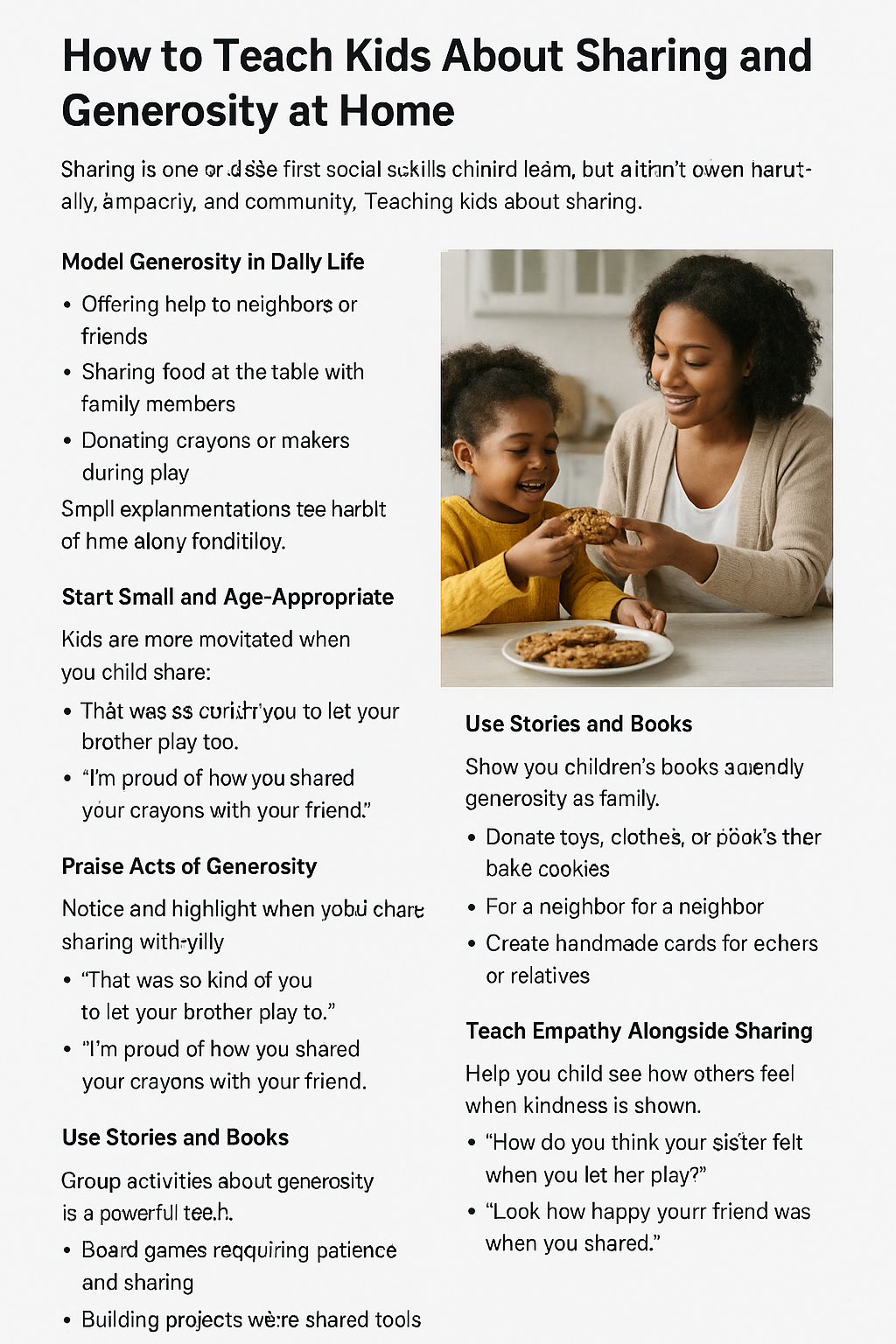Sharing is one of the first social skills children learn, but it doesn’t always come naturally. Young children often struggle with the idea of giving up something they love, yet generosity is essential for building friendships, empathy, and community. Teaching kids about sharing at home lays the foundation for kindness that extends into the wider world.
Here’s how to help your child understand and embrace the value of generosity.
Why Sharing Matters
Children who learn to share and be generous:
- Build stronger friendships
- Develop empathy for others’ needs
- Handle conflicts more peacefully
- Experience joy in giving
- Grow into kind, compassionate adults
Generosity strengthens both character and relationships.
Model Generosity in Daily Life
Children learn best by watching you. Show them what generosity looks like:
- Offer help to neighbors or friends
- Share food at the table with family members
- Donate items you no longer use
- Use phrases like, “Would you like to share this with me?”
Your example makes sharing a natural part of life.
Start Small and Age-Appropriate
For young children, sharing can be as simple as:
- Taking turns with a favorite toy
- Splitting a snack with a sibling
- Offering crayons or markers during play
Small, everyday moments teach the habit of generosity.
Explain Why Sharing Matters
Kids are more motivated when they understand the “why.”
- “When you share toys, both of you get to have fun.”
- “Sharing snacks makes everyone happy.”
- “When you let your friend have a turn, you show kindness.”
Simple explanations connect actions to positive outcomes.
Praise Acts of Generosity
Notice and highlight when your child shares willingly.
- “That was so kind of you to let your brother play too.”
- “I’m proud of how you shared your crayons with your friend.”
Positive reinforcement makes sharing feel rewarding.
Use Stories and Books
Children’s books about generosity are powerful teaching tools. After reading, ask questions like:
- “How did sharing help the characters?”
- “What do you think would have happened if they didn’t share?”
Stories help kids connect emotionally to the lesson.
Encourage Group Play
Group activities naturally teach turn-taking and cooperation.
- Board games that require patience and sharing
- Building projects where kids must share tools
- Pretend play where roles and props are shared
Play is one of the best ways to learn generosity.
Involve Kids in Acts of Giving
Show your child how sharing extends beyond the family.
- Donate toys, clothes, or books together
- Bake cookies for a neighbor
- Create handmade cards for teachers or relatives
These acts show that generosity impacts the wider community.
Teach Empathy Alongside Sharing
Help your child see how others feel when kindness is shown.
- “How do you think your sister felt when you let her play?”
- “Look how happy your friend was when you shared.”
Connecting sharing to emotions deepens empathy.
Final Thought: Growing Generous Hearts
Sharing isn’t just about dividing possessions—it’s about building empathy, kindness, and community.
By modeling generosity, creating opportunities at home, and celebrating small acts of kindness, you’re helping your child grow into someone who values giving as much as receiving.
Because when children learn to share, they’re not just giving things away—they’re spreading love.
